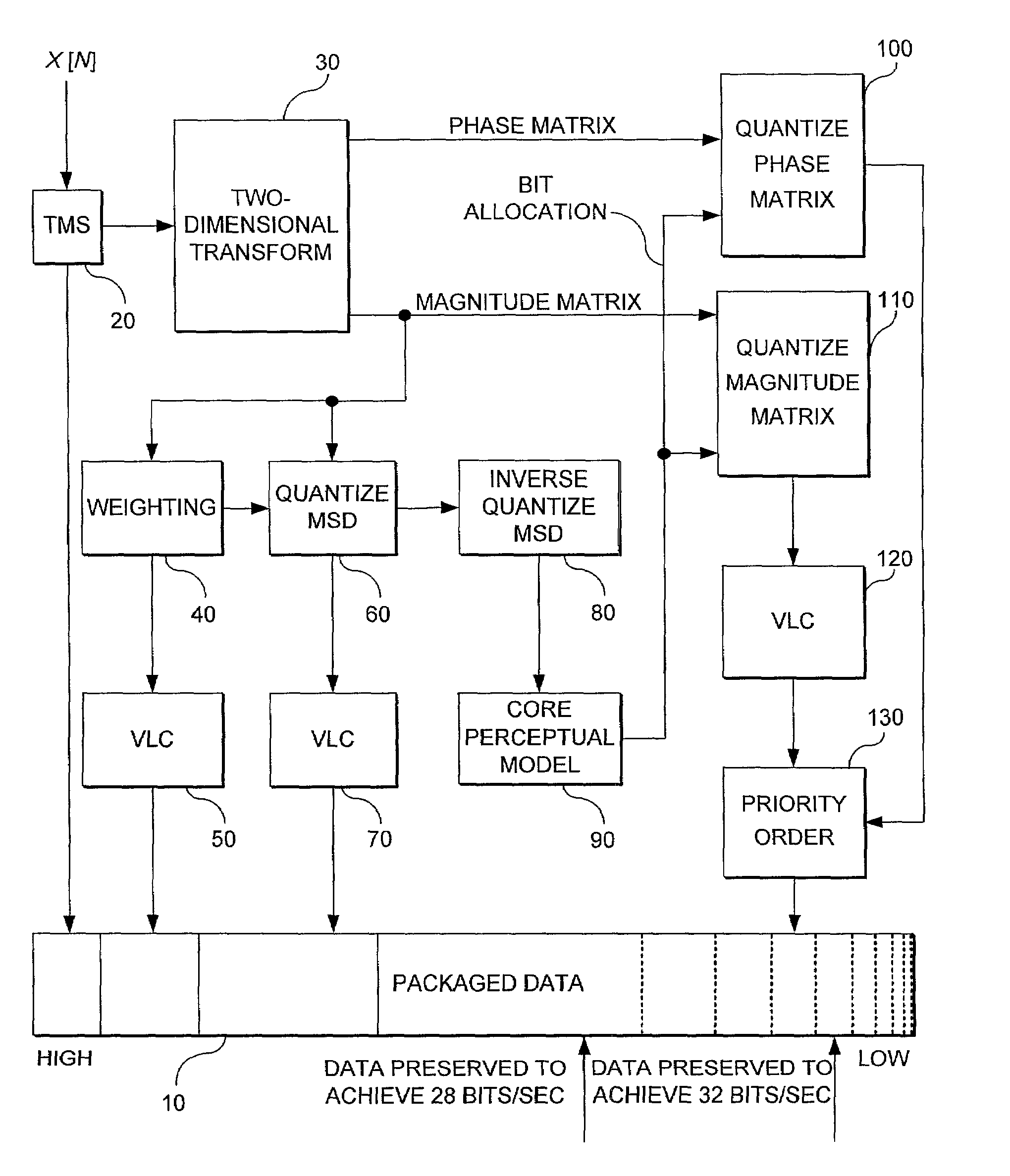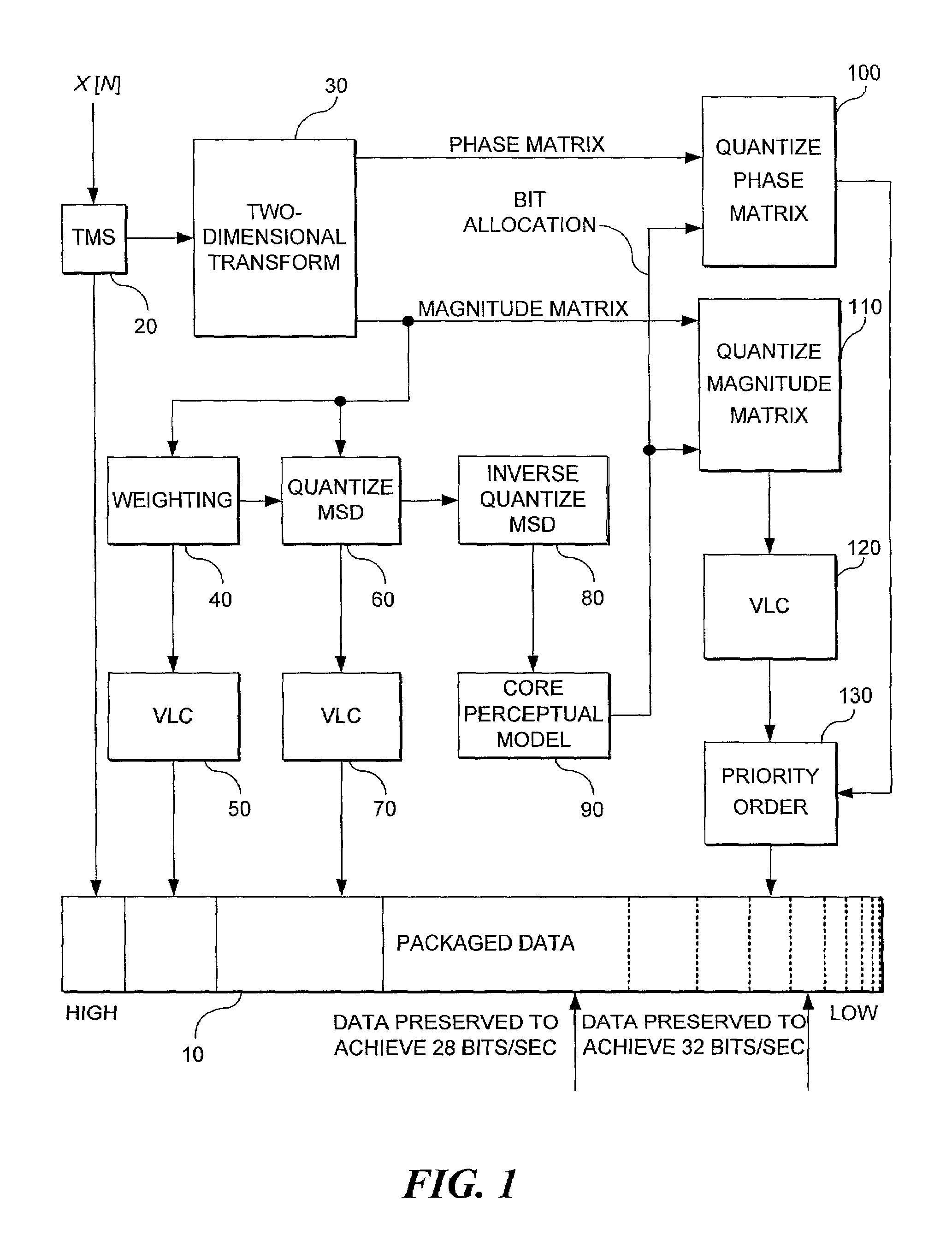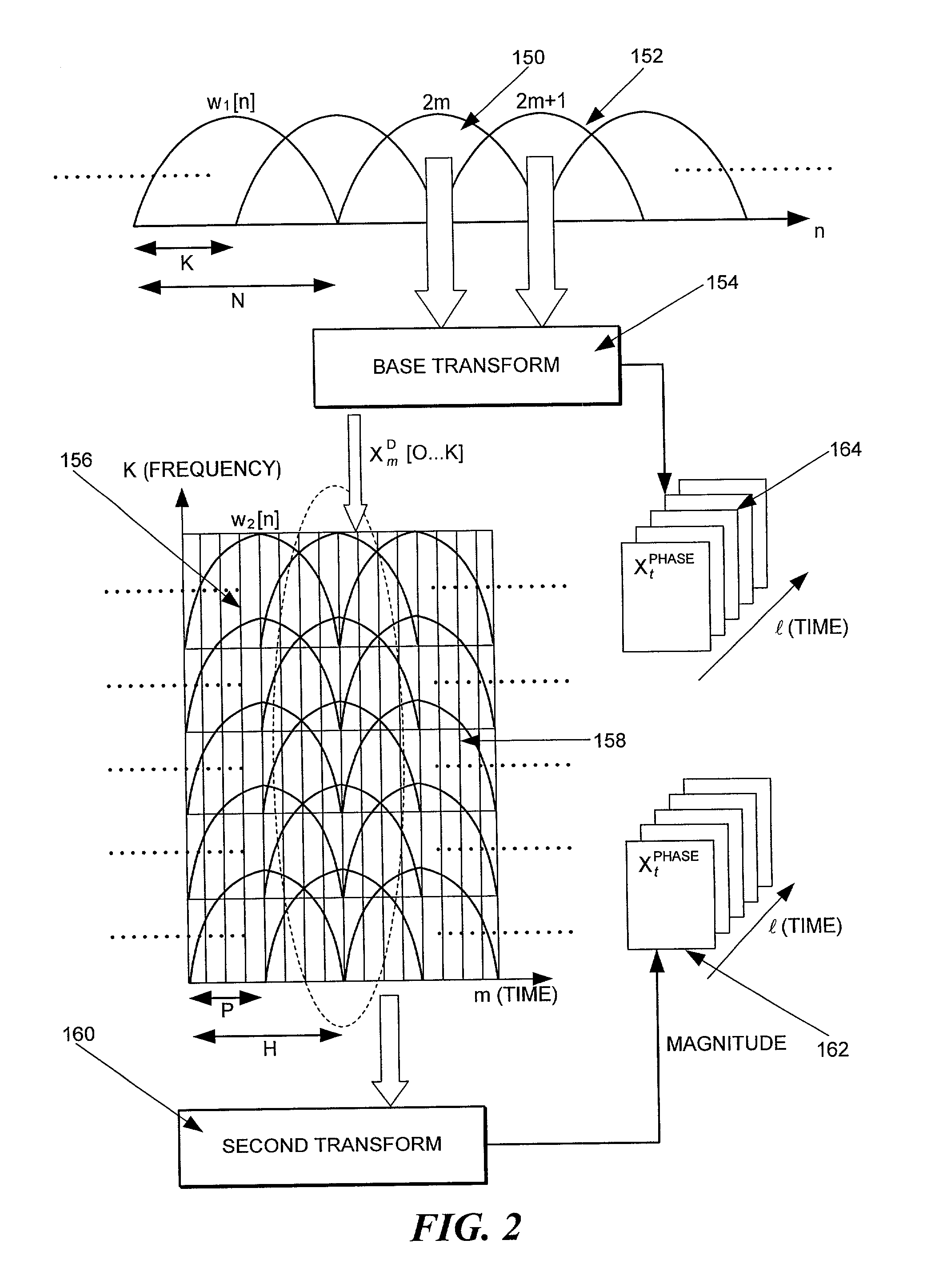Scalable and perceptually ranked signal coding and decoding
a perceptual ranking, signal technology, applied in the field of two-dimensional (2d), can solve the problems of insufficient reproduction quality, multiple limitations of current technologies, and insufficient raw data bit rate of digital audio for channel capacity,
- Summary
- Abstract
- Description
- Claims
- Application Information
AI Technical Summary
Benefits of technology
Problems solved by technology
Method used
Image
Examples
Embodiment Construction
Encoding Process
[0029]FIG. 1 illustrates the overall encoding process used in the present invention, in relation to an audio signal that comprises an input to the process. The intent of the encoding technique is to produce a prioritized data packet 10, with the most perceptually important data placed near the beginning of the data packet, i.e., near the portion of the data packet that is first transmitted. To achieve this goal, a new backward adaptive encoding architecture is applied. Adaptive signal coders can take on one of two fundamental frameworks: forward or backward adaptive. Forward adaptive architectures imply that the encoder makes all adaptive decisions and transmits pertinent information for decoding as side information. The benefits of such forward adaptive schemes are reduced decoder complexity; access to more detailed information, and an encoder structure that can be improved in isolation. Backward adaptive frameworks make adaptations based on transmitted data alone. ...
PUM
 Login to View More
Login to View More Abstract
Description
Claims
Application Information
 Login to View More
Login to View More - R&D
- Intellectual Property
- Life Sciences
- Materials
- Tech Scout
- Unparalleled Data Quality
- Higher Quality Content
- 60% Fewer Hallucinations
Browse by: Latest US Patents, China's latest patents, Technical Efficacy Thesaurus, Application Domain, Technology Topic, Popular Technical Reports.
© 2025 PatSnap. All rights reserved.Legal|Privacy policy|Modern Slavery Act Transparency Statement|Sitemap|About US| Contact US: help@patsnap.com



